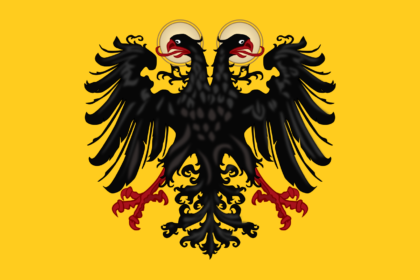Knives, spoons, and forks have been called “cutlery” since at least the Renaissance. The medieval French phrase “mettre le couvert” is often cited as a possible source: While serving a large group of people from a single dish, royals and aristocrats feared that someone would taint the meal by introducing poison. They appeared “undercover” at the presentation. It would have been customary for everyone at the table, not just the nobility, to keep their silverware in a case. As the new dining etiquette spread, the wealthy began having their coats of arms etched on their “cutlery,” which they were required to display as proof of their social standing (with the fork’s tines pointing downward in France and upward in England, respectively). How about when and where they really showed up? Moreover, how long have they been popular? Learn about the brief evolution of cutlery.
Cutlery to serve, fingers to eat
Knives are the progenitors of all other utensils, having existed as early as the Bronze Age and descended from “fitting pebbles,” the first known human tools from the Lower Paleolithic (between 3.3 million and 300,000 years ago). Conversely, spoons might have been made rapidly from of anything that could be used to extract liquids. The Latin word for “snail shell,” cochlea, is the source of the word cochlearium.
Poseidon may have wielded a trident in Greek mythology, but the people of that time served themselves with their bare hands, spoons, and the tips of knives. No forks. Constantinople, around the year 350, is where we first find evidence of the device being used for its intended purpose; later, in the eighth or ninth century, it was in the hands of Persian nobility. Even in the 11th century, when the Byzantine Empire was at its height, illustrated manuscripts depicted men using a two-pronged tool at the dinner table.
The Byzantine princess Theodora Comnenus Angelina, who travelled to Italy to wed the doge of Venice in 1056, would have brought the tool with two picks and a long handle to the country. However, the forchetta, or “little fork,” was only widely used by the upper class. Slices of stale bread, known as “trenchers,” were used as plates throughout the Middle Ages, allowing food to be carried straight to the mouth.
Tools like knives and spoons were needed to cut through tough foods and scoop up liquids. According to popular belief, Catherine de Medici brought the fork to the French court when she traveled from the southern hemisphere in 1538 to wed the future Henry II. Montaigne, writing in the 1570s, describes it as a mark of elegance and notes that it would have been used only on rare occasions, most notably for desserts. His son Henry III would have done the same in 1574 after returning from a visit to Venice.
The fork was initially rejected
In the very least, the fork was likely seen at the court of Francis I or Charles V. In the case of Henry III, however, it was widely disapproved of because its opponents viewed it as effeminate and the manifestation of a moral decline. Also, “the devil’s tool” for encouraging gluttony, as described by the clergy. Its use was, however, slowly imposed. Even though Louis XIV disdained it, Austria’s Maria Theresa would utilize the fork while eating her food.
Everyone at the meal was given a fork, but because the Sun King ate with his fingers instead, none of them were used. Because his children’s teachers had encouraged them to try out the new cutlery, Louis XVI banned its usage in the royal household. Only in the 17th and 18th centuries did the nobility start purchasing silverware sets in such large quantities that people who did not have them were looked down upon. The fork’s number of prongs increased from two to four sometime after the Age of Enlightenment.
Beginning in the early 19th century, with the rise of porcelain and formal dining rituals, it became a staple on French tables, especially those of the wealthy. The use of silverware at formal dinners was a sign of social status and was meant to leave a lasting impression on visitors. The majority of working-class people ate with spoons as their primary eating utensil.
In the end, it was the development of the kitchen and people’s changing attitudes about food that made everyone use forks. Every individual in the 19th century began to use utensils to pick up food from his plate, primarily due to concerns about cleanliness. The development of silver plating processes further facilitated this use, as silver was a costly and scarce metal in the 18th century, when most utensils were first introduced. Thus, the knifes automatically sharpened themselves whenever they were used.
3.3 billion people use cutlery
Today, approximately 3.3 billion people use cutlery, either solely or partially, while they eat, according to data compiled. This trend began in Europe and has spread to other areas of the world. Almost all of Africa, along with large portions of Asia and South American countries, have about 3.5 billion people who could not survive without it.
It wasn’t until recently that the fork became “exotic” in the countries of its birth; for example, in China, where the fork was used for the first several centuries, it was banned in the third century and replaced by chopsticks, per the recommendations of Confucius, as reported by the China Daily.
The idea of the host turning the cutlery into a weapon and the associated dread of assassination contributed to the widespread perception that cutlery was barbarous and deadly. One sits at the table for food, not to butcher, as the old Chinese saying goes.
Further reading:
- Chopsticks. China Daily.
- et Pierre Breteau, W. A. (n.d.). Fourchette, doigts, baguettes. . . avec quoi se nourrissent les 7,5 milliards d’humains ? Le Monde.fr.





